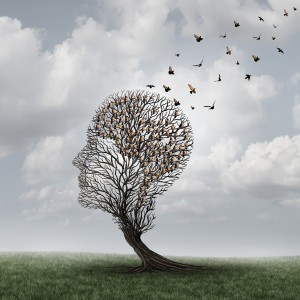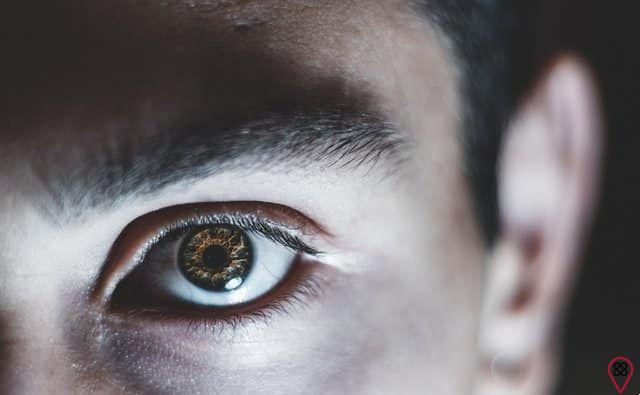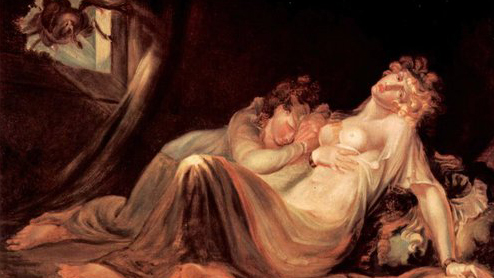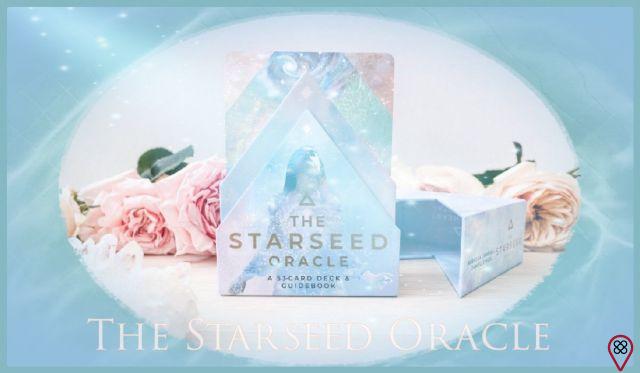Suffering is one of the artists' favorite themes. In everyday life, no one is free from suffering, not even a child. Very low school performance, difficulty paying attention, not wanting to go to school and having a headache or other physical symptoms when going to class indicate that she is being bullied, violence where the target is constantly humiliated, oppressed, physically assaulted and, in more serious cases, dead. Parental separation also makes a child suffer. Agitation, crying, altered heart rate, aggression, drop in school performance, feelings that the situation is fleeting, guilt and abandonment are the main characteristics of this suffering.
Adolescence is a phase of “great loss and grief”, in the words of psychologist and psychoanalyst Elianne Diz de Abreu. But, unlike childhood suffering, where great care is taken to recover the emotional, the teenager is left aside in relation to his doubts and existential crises. The girl or boy who is locked in the room and shows fluctuations in behavior is considered “normal”. Adolescence is indeed a phase of mood swings and exaggerations, but there are limits. Prolonged grief, isolation and seeking refuge in illicit substances must be investigated and treated. Elianne emphasizes that every change causes crises. Let's understand what makes a young person suffer:
Goodbye to the children's world
It used to be a fun, responsibility-free and safe world. Suddenly, things change and the world takes on greater proportions. If before the world was the home, the school and the residence of relatives, today it is the size of infinity, with its particularities and possibilities, its fascinations and fears. It is difficult to deal with this rupture that, consequently, is accompanied by the famous…
Identity crisis
The body changes from one hour to the next. It is in adolescence that the “spurt” takes place and the boy and girl grow up. Hair appears, the body takes shape, the voice changes… The individual is no longer a child, but neither is he an adult. Faced with this impasse, it is impossible not to be disoriented. In this identity crisis, the young person changes the view he has of his parents, the father is no longer a hero, the mother is no longer wonderful. In this demystification, parents gain a “normal” air and become real people.
Sexuality?
With the change of the body comes the discovery of sexuality. But if you are not yet an adult, can you experience the pleasures that the body is ready to provide? The hormones say yes, but the mind and heart have many doubts. Parents who are repressive or neglectful of these changes get in the way.
female suffering
Women are freer to suffer and expose existential doubts and love problems. Female suffering is more respected. Being influenced by hormones, women's physical and emotional sufferings are associated with menstruation. The flow prevents the transit of vital energy through the body. The energetic charge of menstruation possesses the woman in such a way that it speaks, acts, thinks for her and gives rise to negative events.
male suffering
Male anxieties are often not taken seriously. The man has always been encouraged to hide his emotions and weaknesses as proof of his masculinity. Masculine archetypes can explain how men deal with suffering. Check out the top four:
Aternus child
In Latin, it means "eternal youth". For Jungian Analytical Psychology, the psychological current of the Swiss psychiatrist Carl Gustav Jung, this archetype has as its figures the child, pre-adolescent and adolescent. Psychologists who follow this trend point out the Puer Aternus related to immaturity and narcissism.
Trickster
Mythology, folklore and religion show the Trickster (player) as a spirit god, goddess or anthropomorphic animal (being with human characteristics). Trickster doesn't follow rules, he can be smart or silly. This archetype is called the “emergent male” that transits between being an adult, continuous renewal, sensuality, the Puer Aternus and the father (the fourth archetype).
Hero
Archetype linked to rites of passage, structures that form male consciousness and the formation of virility.
Father
Concepts of law, exemplification of what can or cannot, archetype of ego formation, psychological structure responsible for making human beings act rationally, plan and wait.
Wise old man
Hero reflection and advice.

Suffering According to the Bible
Many people ask themselves: “Why does God allow good people to suffer?” Doubt is natural because he is merciful. Christians can look to the Bible for explanation and comfort for painful times. The holy book has a whole book on the subject, Job. He was sad because of the quarrel between God and Satan, but he was not aware of his suffering. When Job is confronted by God, man understands that no pain and no suffering are the result of chance, all the tests we go through are works directed by God. The great lesson is to understand that even the most painful days serve as a lesson to trust that God does not abandon us and has a greater purpose.
Suffering is also a theme in Genesis. The feeling of Joseph, made and sold into slavery by his brothers, is the background. Joseph was falsely accused and imprisoned in Egypt. Suffering, especially faith in better days, made him overcome adversity and reverse the situation, becoming governor of Egypt, a position below Pharaoh. The moral of this story is in Genesis 50:19-21 “Do not be afraid; Am I in the place of God? You, indeed, intended evil against me; but God meant it for good, to bring about, as you now see, that many people should be kept alive. Fear not, therefore; I will provide for you and your children. So he comforted them and spoke to their hearts.”
Suffering in Buddhism
In Buddhism, a philosophy created by Siddhartha Gautama (Buddha) in India, suffering comes from attitudes practiced throughout life, which are counted in other lives. In this philosophy, there are eight sufferings, let's see what they are:
- birth: after nine months comes the pain and fear of being born. The suffering of birth says that we are prisoners of our body and the place where we were born;
- Aging: passing unscathed through the temptations and dangers of youth is a victory. Aging is seeing the deterioration of body and mind at the same time that we see loved ones die;
- Disease: health is one of the pleasures of life, as it is the opposite of the disease that prevents all pleasures. However, no one is free from suffering for the absence of this pleasure;
- Death: the only certainty in life. Death can be sudden, but most of the time it is slow and very painful;
- Losing a love: it will be difficult to find someone who never suffered because they saw the loved one leave or someone who always had their feelings returned;
- be hated: we can be hated even when walking on the rails of goodness and justice. Whoever does this is the greatest enemy of the sowers of discord;
- Unfulfilled wish: much of who we are is determined by our desires. Many sufferings are caused by them. Non-fulfilment brings even more pain;
- The Five Skandhas: form, sensation, perception, activity and consciousness are the means for the materialization of suffering.
Causes of suffering
All suffering has a cause, check out the explanations for each suffering:
Me in disharmony with the material world: we are never satisfied, hence this disharmony. If it's hot, it's too hot, if it's cold, it's too cold. If the street is silent, it's too silent, if it's noisy, it's too noisy. If the house is small, it's too small, if it's big, it's too big. If we are single we want to date and vice versa. We think that the world is never according to what we want, but, to be honest, we don't know what we want out of life.
Me in disharmony with people: we don't always get the chance to be with people we like. Work, study and life in society force us to live with people we can't relate to who, in turn, don't make a point of hiding the dislike they feel for us.
Me in disharmony with the body: we need to accept the cycle of life, which is birth, aging, loss of health and death. As Mário Lago says: “I made an agreement of peaceful coexistence with time: Neither he pursues me, nor I run away from him, one day we will meet”.
Me in disharmony with the mind: many of us have no control over our mind. We can't concentrate on one idea and our head jumps to another. When the mind is not in order, we find it difficult to perform activities with excellence.
Me in disharmony with your desires: we know that desires can cause suffering, but that doesn't mean we can control them. This lack of self-control is because we don't know what's really best for us. We become hostages to our desires and pay with suffering.
Me in disharmony with my own opinions: when our opinions do not follow the path of truth, our heart suffers a lot, because we will tirelessly repeat the same mistakes.
I in disharmony with nature: man suffers from violent climatic oscillations. Unbearable heat, intense rains, devastating floods and endless droughts. Human greed causes nature to collapse.
Sad memories hurt more?
Yes, much more than you can imagine. If you think this is silly, better change your mind. This is what a study carried out by Purdue University in the United States reveals. The researchers looked at people with a history of serious emotional loss. They found that psychic pain stays longer in the memory because it acts like a yo-yo that goes back and forth, and with each turn, it hurts the already fragile mind.
Physical and emotional pain originate in the cortex, the area of the brain responsible for judgment and perception actions. Why emotional pain remains present after so long is still a mystery. However, it is a fact that suffering causes physical problems. Recovery is slow, as the mind is “hammering” the pain all the time, as explained by Sueli Damergian, a psychologist at USP (University of São Paulo).
Conventional treatments
Therapy is indicated for any internal conflict that shakes human existence. The treatment varies according to the problem, the intensity and, mainly, the characteristics of the individual. The most used currents are Cognitive Therapy, which deals with the consequences of pain, and psychoanalysis, which investigates the root of the problem. The duration of treatment is also variable.
|
Eternal Sunshine of the Spotless Mind
|
How are memories formed?
Proteins stimulate brain cells to form new connections. After the process, the memory is stored to be accessed. Long-term memories have no stability, they become malleable and stronger each time we remember them. This phenomenon is the reconsolidation, responsible for changing memories over the years.
Richard Gray is a scientist who participated in research to study the relationship between norepinephrine (or norepinephrine) - a substance activated in fights, anxiety before air travel and responsible for the racing of the heart and sweaty hands in these situations - and unpleasant memories. By preventing the production of this component, it would be possible to “erase” the bad memories. Gray and the other researchers analyzed three groups of people afraid of spiders, two of whom saw a tarantula inside a jar. The third did not see the animal and received propranolol, a substance used to treat high blood pressure.
After a few months, the group that received the drug was able to see and touch the animal without fear. After three months, most of the volunteers were holding the spider. The absence of fear lasted more than a year. Gray explained that “our study suggests that memories can be manipulated because they 'act' as if they were made of glass, in a state before it became solid. When a memory is 'requested' again, however, it reverts to this malleable state and allows for alterations”.
The most unbelievable thing is being able to implant false memories with the reconsolidation process, in this way, people will remember things that never happened and give details.Researchers at Memory Hackers say the idea is not to erase sad memories completely, but to make them less painful. For them, studies in this area will help in the treatment of anxieties and phobias.
Have you ever thought about being able to erase part of your sad memories? Would you go through this treatment? What memories would you erase? We want to know what you would erase and why.
Text written by Sumaia de Santana Salgado from the Eu Sem Fronteiras Team

























